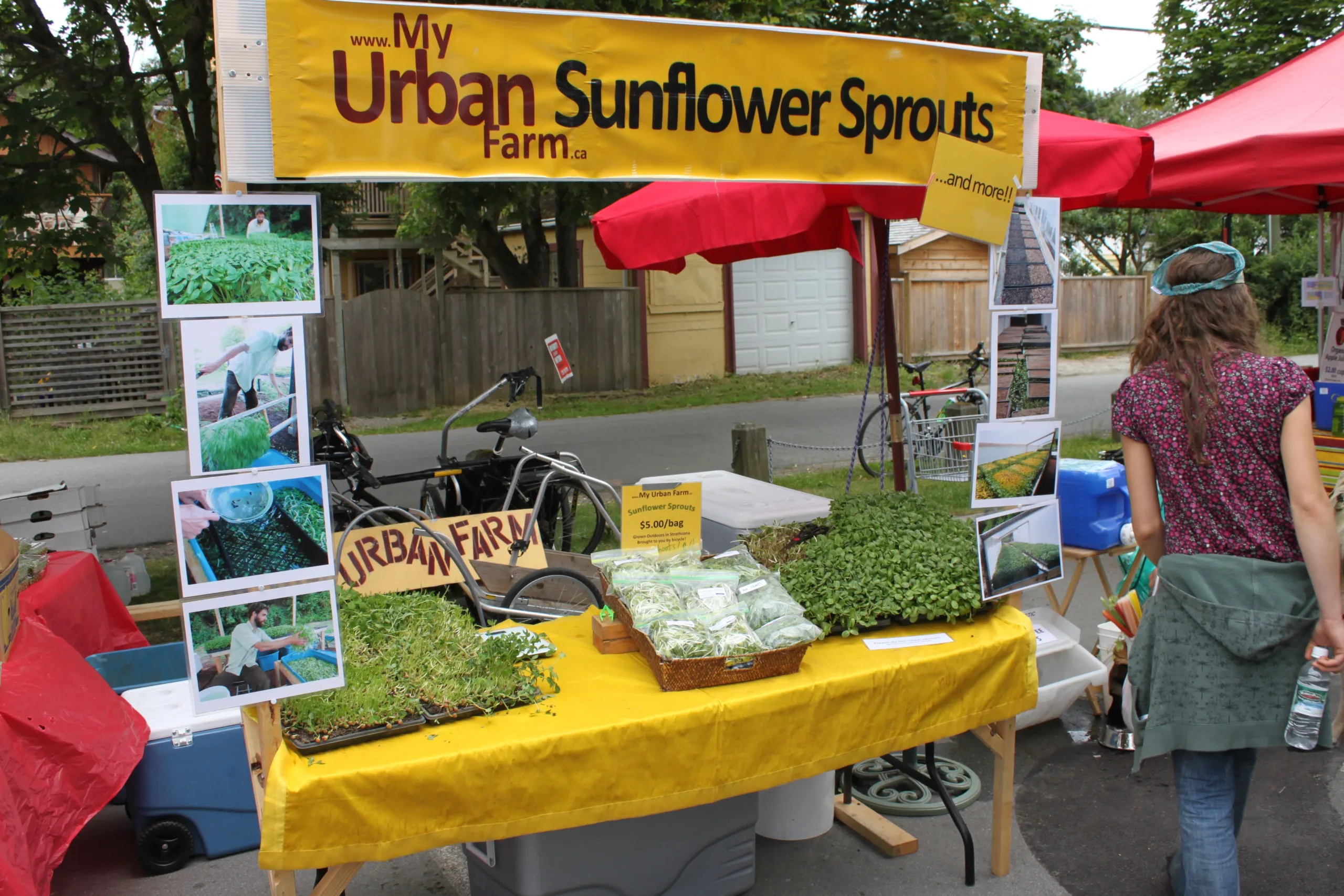
How I Introduced a Single Microgreens Crop to Market (and Priced it to Sell)
Introduction
Launching a new product in a competitive market is always a challenge. But sometimes, the key to standing out isn’t bringing more — it’s bringing less and doing it better than anyone else.
That was the mindset I had when I introduced sunflower shoots — just one product — to the Vancouver farmers market in 2009. What started as a bit of personal experiment (and directed studies project at UBC) eventually became the cornerstone of a thriving urban microgreens business. Here’s the story of how it happened, the lessons I learned, and the systems I built to support sustainable growth.
The Early Days of Microgreens Stardom
So I need to start this article with a caveat – the story dates back to 2009. And in the world of online learning and education – that was eons ago. When I started growing microgreens, you couldn’t just search Google and find all the answers you wanted. In fact, until I launched my online course with Modern Grower in 2017, you couldn’t find much of anything online about microgreens growing.
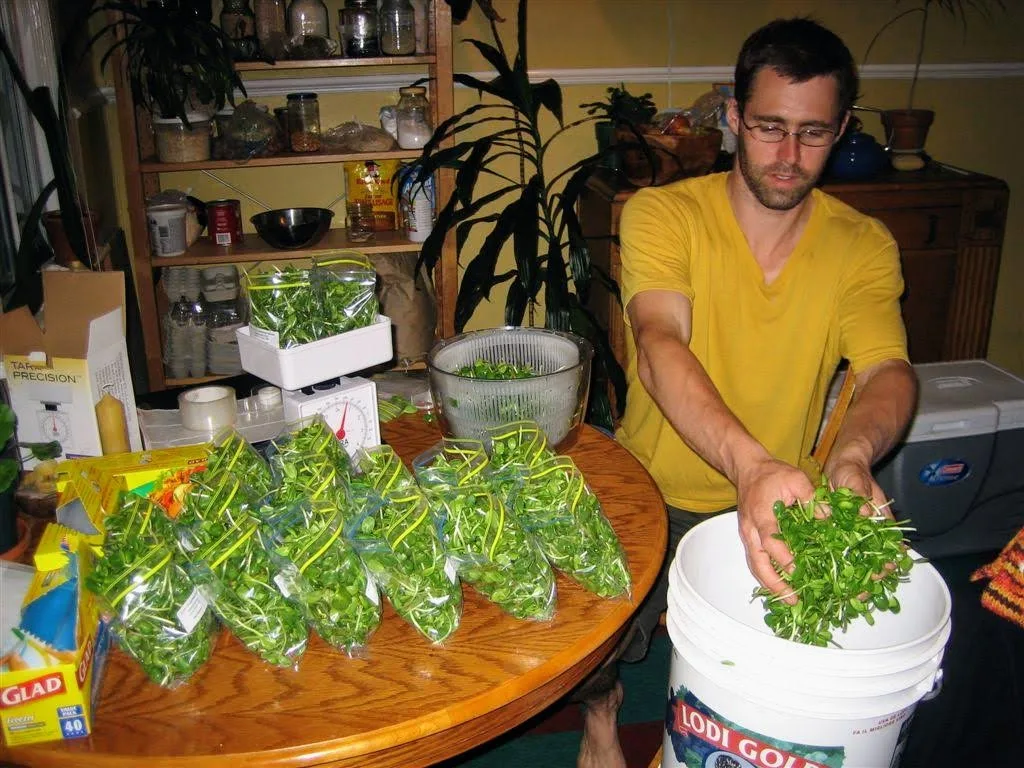
So there were a lot of difficult lessons. But those lessons helped me build effective strategies and systems for effective commercial microgreens production.
Starting With Just One Crop
In my first year selling at my local market, I grew just one crop – sunflower shoots. It wasn’t part of a grand strategy — I just had experience growing it at home, knew it was a high-value crop, and knew that nobody else at my market was offering it. That simplicity turned out to be one of my biggest advantages. It allowed me to:
- Learn the crop deeply — from germination timing to ideal harvest window
- Streamline my production system and infrastructure
- Focus on customer education and product presentation
Sunflower shoots are hearty, substantial, and high in protein — easy to explain, easy to enjoy. That helped lower the barrier for customers trying them for the first time. Oh, and they taste great – which doesn’t hurt sales!
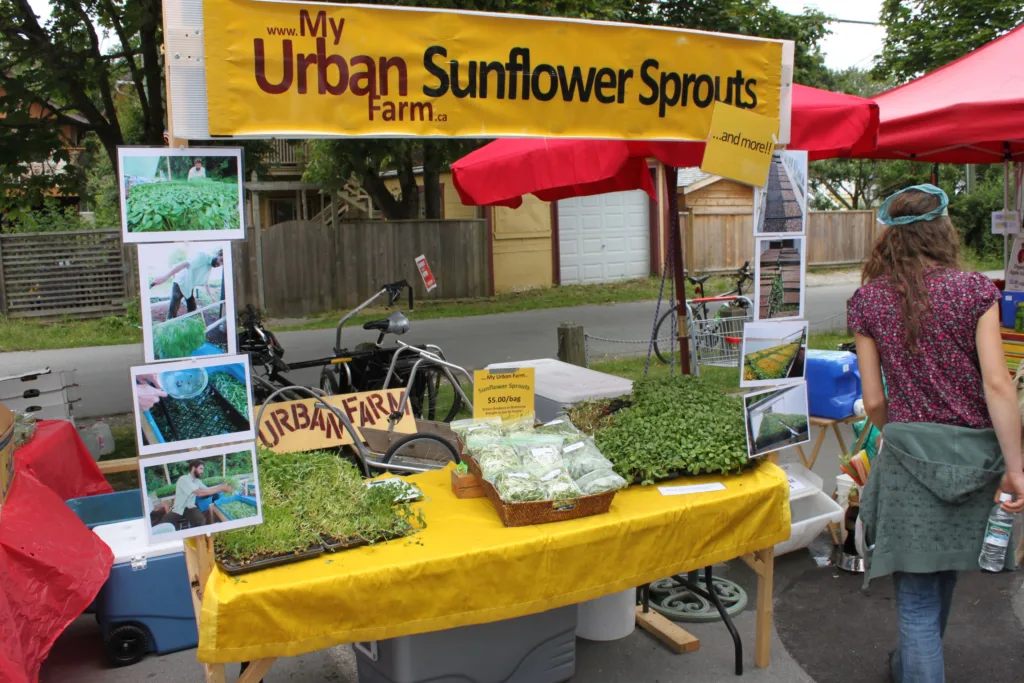
So you might think, can I use that approach now? Start with just one crop? It’s still possible – in most of North America, microgreens are still relatively unknown and pretty much a novelty. But read on – my success wasn’t just about the product.
Selling the Story, Not Just the Shoots
When I introduced sunflower shoots to the market in Vancouver, I didn’t just show up with bags of greens. I showed up on a bicycle with a bag of greens (well, lots of bags of greens!) and I came with a story: locally grown in the city, transported by bicycle, grown naturally, from a micro-farm trying to change the way food is produced and sold.

So customers felt they weren’t just buying the product. They were buying the whole package — and the story mattered as much as the taste. That context — local, urban, and sustainable — gave the product a reason to be noticed. And it worked. In fact, it was this story that got me into the market on my first application when there was already a substantial waiting list.
And this is an approach that definitely still works as more and more people make an effort to get connected to their local food system.
The $5 Price Tag (and What Was Inside)
Beyond the local food narrative, I also employed pricing strategy that is pretty common today – siple price for a quick transaction. In other words: making it easy for people to hand over $5.
- $5 was a psychological sweet spot for impulse buying.
- The local market used $5 wooden tokens as cash — even more reason to hit that target.
- I matched the price with generous packaging: 200g of sunflower in a mid-sized freezer bag.
- Many of my sales were customers’ last $5 of the day
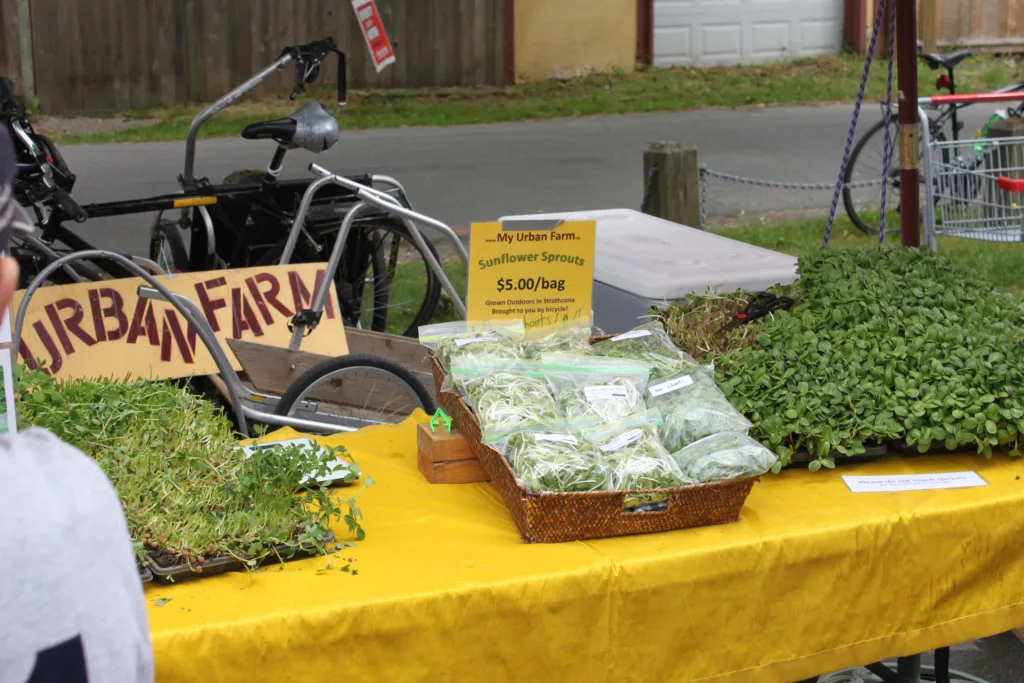
The $5 price tag worked so well that I kept it – even as my prices “increased”. Over time, I simply reduced the weight of my product slightly while keeping the price the same:
- 200g → 180g → 150g → 125g
Each time, I improved my communication, my display, and my reliability as a grower. That built customer loyalty, even as I subtly increased the product’s price per gram.
Would this work now? Well, in this case, my pricing started waaaaay too low as I hadn’t done a really good financial analysis. It took a few years to build the knowledge and tracking system to understand the economics enough to properly understand pricing. So how would I do it now to get into the market?
I’d set a low but still profitable price to encourage sales and then with good product quality and good customer service, raise prices over time. In some cases, I might enter a new farmers market at a higher price to get an instant price boost as well.
Expanding the Product Line: Slowly, On Purpose
Once my sunflower production was dialed in, I basically added one new crop per year:
- Year 2: Pea shoots — familiar to customers, easy to grow.
- Year 3: Radish — spicy, unique flavor; easy, resilient crop.
- Year 4: Buckwheat — tender, mild, a good balance to the others.
The rule was simple: if it didn’t grow well in my system, I didn’t grow it. I optimized the growing environment for sunflower as it was such a good seller, so every other crop had to adapt to those conditions — not the other way around.
That constraint kept the business focused and production reliable.
Would I still do this now? Definitely not. The online knowledge base is enough that you can learn the production basics of most crops pretty quickly and dial in growth for your system. Some crops are harder to grow for sure – dial those in after you have a reliable product line already generating good revenue.
Choosing Crops Based on Your System
I experimented with basil, cilantro, arugula, and kale — but only kept growing what I could grow well and sell consistently.
Some crops like cilantro or basil introduced mold issues or had long growth cycles. If a crop didn’t perform or couldn’t fit within my existing cycles, I cut it. I had limited production space so each crop had to make financial sense, and I had to get it in and out of my system quickly to make room for the next crop cycle.
This discipline was essential. My space was limited, and my priority is producing high-quality, high-yield trays on time. That means:
- Avoiding crops that take too long (like basil)
- Avoiding ones that fail under my humidity, heat, or lighting conditions
- Standardizing crop cycles for ease of management
Would I still take this approach now? Well, it depends. Ideally you I would love to have two growing environments, one for heat-loving crops and one for cool- and warm-loving crops. Though there is some compromise somewhere in the middle.
What Makes a Crop Worth Selling?
Here’s what I look for when determining where or not to add a new crop to my system:
- Ease of growth — Can we get consistent yields? Is it disease prone? Does it germinate slowly? It is important to understand these characteristics of each crop you grow.
- System fit — Does it thrive in our grow environment? Does it prefer more or less heat than our system offers? Does it have an excessively long growth cycle?
- Customer value — Will people buy it regularly? Even when customers ask for products it doesn’t mean they will actually buy them.
- Shelf life — Can we store it for more than a few days or will it easily last a week? We want products that won’t spoil on our customers before the next market
- Visual appeal — Does it look great at the market or on a plate? Looks are a great selling point!
- Reliable seed source — Is the seed reliably available? Some seeds are easy to get consistently, others vary in their availability
For me, sunflower still wins on all fronts.
In Closing
A lot of growers rush to offer dozens of crops right out of the gates — hoping the diversity of crops will attract more customers. But what I’ve learned is that focus, not variety, is often the best path to strong sales and customer loyalty.
Start with one crop. Tell a compelling story. Dial in your systems. Then grow — slowly, intentionally — from there. Though you can definitely grow faster than one crop per year!
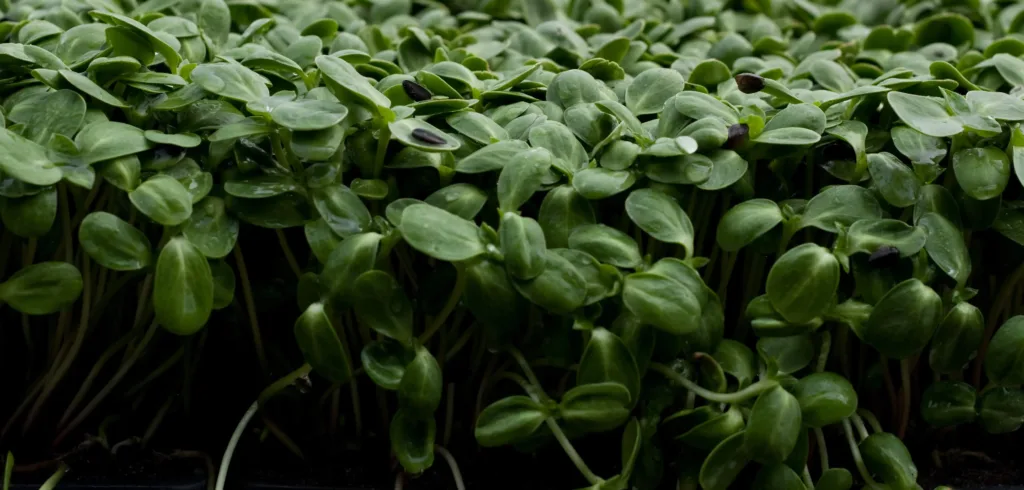
Leave a Reply